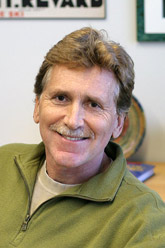
Handy Links
SLAC News Center
SLAC Today
- Subscribe
- Archives: Feb 2006-May 20, 2011
- Archives: May 23, 2011 and later
- Submit Feedback or Story Ideas
- About SLAC Today
SLAC News
Lab News
- Interactions
- Lightsources.org
- ILC NewsLine
- Int'l Science Grid This Week
- Fermilab Today
- Berkeley Lab News
- @brookhaven TODAY
- DOE Pulse
- CERN Courier
- DESY inForm
- US / LHC
SLAC Links
- Emergency
- Safety
- Policy Repository
- Site Entry Form

- Site Maps
- M & O Review
- Computing Status & Calendar
- SLAC Colloquium
- SLACspeak
- SLACspace
- SLAC Logo
- Café Menu
- Flea Market
- Web E-mail
- Marguerite Shuttle
- Discount Commuter Passes
-
Award Reporting Form
- SPIRES
- SciDoc
- Activity Groups
- Library
Stanford
Around the Bay
From the Director of LCLS: Take a Moment, Pause and Celebrate

Amidst the daily hustle it is sometimes good to take a break and exhale. Two such opportunities are coming up in the next two weeks for the entire lab. The first is an opportunity to "Pause," to look at our progress in working safely, remind ourselves not to let our guard down and slip back into bad habits, and take the time to think how we can do even better. The second is a SLAC milestone event on Monday, August 16: the dedication of the Linac Coherent Light Source. We will take a moment to reflect on a lab-wide accomplishment and celebrate the beginning of a new era in the proud history of SLAC. We will share this event with prominent guests, among them the Secretary of Energy and other leaders of the Department of Energy, the Stanford President, local political representatives and prominent scientists from around the world.
To be sure, LCLS was not born overnight. Today we typically associate 1992 with the date of its inception, and more specifically with the proposal by Claudio Pellegrini of UCLA to use the SLAC linac and create a 1 to 10 Å X-ray free electron laser. In fact, the full story started even earlier, in the 1970s and 1980s with theoretical, experimental and technological discoveries and innovations that eventually led to the development of a working concept, and the courage of DOE's Office of Basic Energy Science to invest nearly half a billion dollars to construct LCLS. At some stage, the Nobel committee will likely have to sort out the question of the true pioneers—the stakes are high and I do not want to get into the middle of it…
There is no question, however, that 1992 was an important milestone because from a practical point of view it was the birth of X-ray free electron lasers as we know them today. The ensuing story has the characteristic up and downs of any good development, in the end leading to sharpening of the arguments and success. The first design concept developed at SLAC for LCLS, which focused on a soft X-ray machine, soon went up in smoke because the visionary accelerator scientists could not find the buy-in of the biological community they had envisioned as the main customers. It was then suggested by SSRL Director Art Bienenstock that the hard X-ray scientific community would be more responsive to the opportunities offered by an X-FEL operating at higher X-ray energies. Workshops and studies of such an X-FEL continued through the 1990s, organized by Herman Winick and colleagues. With time it became clear to several leaders in the X-ray field that the accelerator scientists were on to something revolutionary. In particular, scientists at SLAC and DESY realized the potential of brilliant short bursts of X-rays. There were of course the typical nay-sayers, not only prominent X-ray scientists who questioned whether such machines would ever work but also members of the laser community who questioned the large accelerator concept in the belief that the development of more conventional lasers would soon cover part of the X-ray spectrum and would cost less.
In the end, LCLS constitutes an example wherein the idea of a new scientific and technological capability developed by one science community (accelerator scientists) is slowly taken up by another science community (the X-ray community), who after nearly 20 years are putting it to good use. Today we are at this point in time and we will take a break and celebrate this achievement.
We are, however, far from being finished. The ultimate step in the development chain actually still lies before us. While the accelerator and X-ray communities clearly have their own scientific accomplishment and value system, the bigger question concerns the value of LCLS and facilities like it to the nation whose tax payers fund it, and ultimately its value to society and humanity. I would argue that in the end, LCLS will have been a failure if we do not accomplish this latter goal. Looking at the world around us, challenges come to mind such as improving human health, developing new sources of energy, controlling our environment and climate, and contributing to technological developments. Clearly, LCLS cannot hope to do it all, but the challenge over the next few years will be to identify scientific areas of impact and deliver scientific breakthroughs in selected areas. This will close the synergistic development cycle from accelerator science to X-ray science to "performing science." The beauty of this development is that it also forms an important aspect of the development of SLAC apart from the particle and particle astrophysics area. We are already experts in accelerator and X-ray science, and we now have to strengthen the "performing science" area, which has been seeded through the Stanford Institute for Materials and Energy Science and the PULSE Institute for Ultrafast Energy Science, and presents a great opportunity for future growth and impact.
